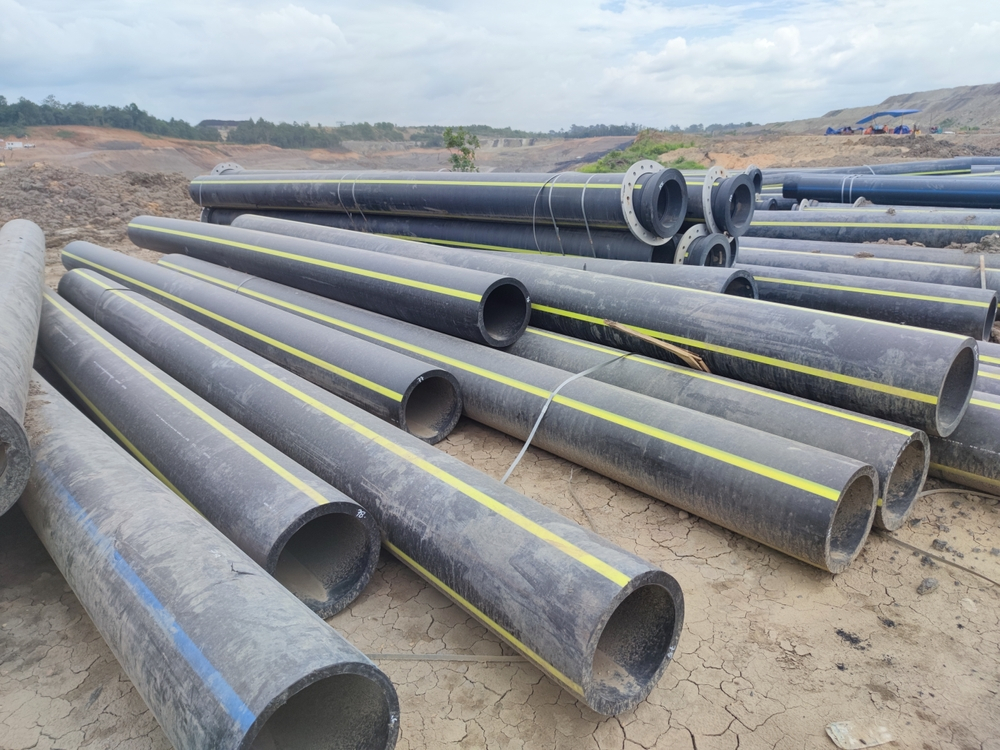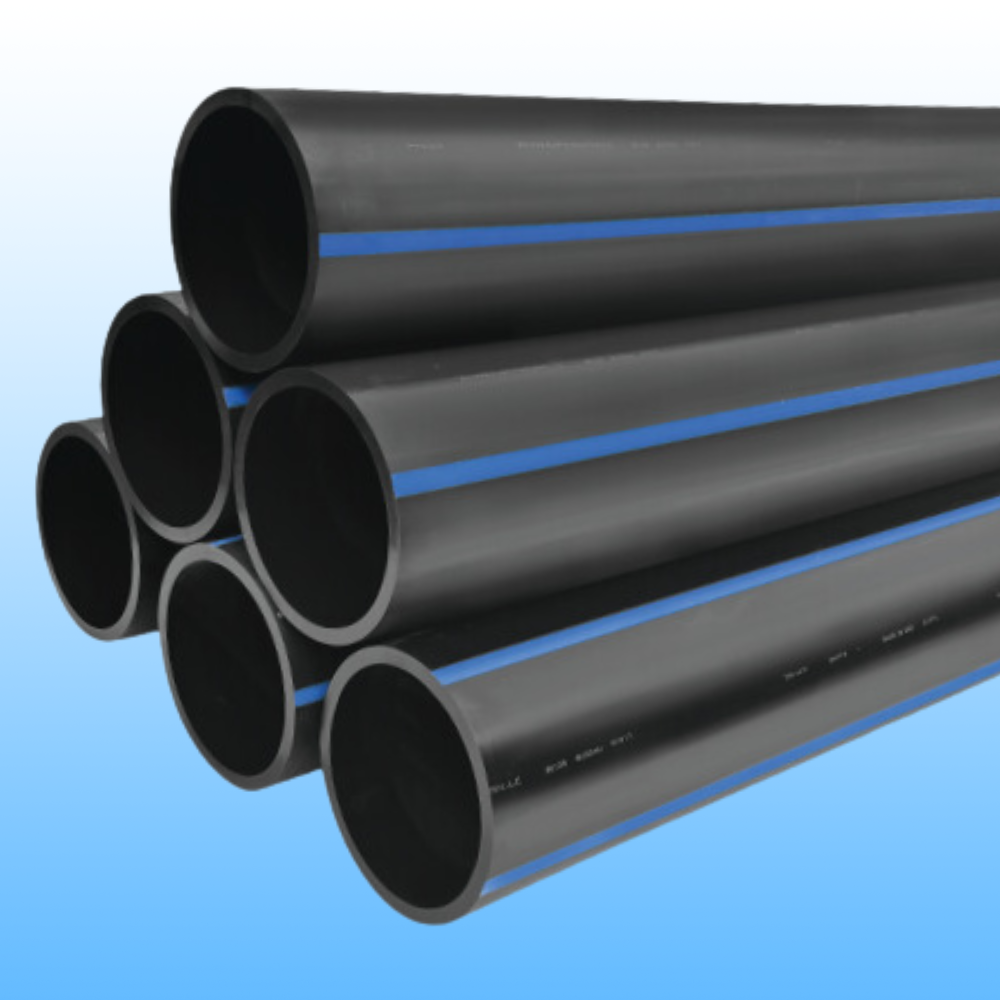How to Use hdpe pipe fittings Midland TX for System Longevity
The Necessary Steps for Successful Installment of HDPE Pipe in Your Following Project
Successful setup of HDPE pipe requires cautious planning and execution. Key actions include reviewing project demands, preparing the site, and picking proper joining methods. Each phase plays a critical role in ensuring the honesty and efficiency of the pipe. Recognizing these vital actions can greatly influence the overall success of the task - hdpe pipe in stock Midland TX. The nuances of each step may hold the key to overcoming usual difficulties encountered throughout setup.
Understanding the Benefits of HDPE Pipeline
High-density polyethylene (HDPE) pipe provides various benefits that make it a favored choice for numerous applications. Its high resistance to corrosion and chemicals warranties longevity sought after atmospheres, significantly expanding the life-span of setups. Additionally, HDPE's adaptability allows for much easier setup, particularly in challenging surfaces, as it can bend without breaking. The lightweight nature of HDPE pipe streamlines transportation and handling, decreasing labor prices during installment.
Additionally, HDPE pipeline is known for its reduced friction coefficient, which boosts fluid flow and lessens power usage. Its smooth building and construction minimizes the risk of leaks, adding to far better source administration and environmental security. Furthermore, HDPE is recyclable, aligning with sustainable techniques and decreasing ecological effect. On the whole, the mix of strength, versatility, and eco-friendliness makes HDPE pipeline a premium choice for a vast array of jobs, from water circulation to industrial applications.
Preparation Your HDPE Pipeline Installation
When planning a setup of HDPE pipe, mindful consideration of several essential aspects is crucial to protect an effective job. Task managers must evaluate the particular requirements of the pipe, consisting of the meant use, flow rates, and ecological conditions. Recognizing these specifications will direct the option of appropriate pipeline dimensions and material quality.
Next, timelines ought to be developed, considering procurement schedules and any kind of prospective delays. Control with neighborhood authorities for authorizations and governing conformity is also important. Furthermore, a comprehensive budget plan must be prepared, encompassing all prices connected with materials, labor, and machinery.
Finally, it is important to engage a certified group experienced in HDPE pipe setup. Their competence will help alleviate threats, guarantee adherence to industry requirements, and inevitably contribute to the project's success. Detailed planning prepares for a smooth installation procedure and durable performance of the HDPE piping system.
Preparing the Site for Installment
Proper site preparation is essential for the effective installment of HDPE pipe. Before installment begins, the website has to be thoroughly examined to assure it satisfies all necessary requirements. This consists of evaluating the ground for existing structures, energies, and potential risks that might hamper the installment process.

Appropriate altitude and placement need to be established to keep a constant slope for water drainage objectives. Appropriate water drainage around the installment site is additionally necessary to prevent water accumulation, which can cause complications down the line.
Methods for Joining HDPE Water Lines
Attaining a reputable connection between HDPE pipes is vital for making sure the honesty and long life of the installation. Various techniques exist for joining these pipelines, each matched for various project demands. Combination welding is among the most common methods, using warm to bond the pipe ends together, developing a seamless and long lasting connection. This technique can be further categorized right into socket fusion and butt fusion, relying on the pipeline arrangements.
Mechanical installations are an additional choice, using clamps and threaded connectors to sign up with areas of HDPE pipe. While generally faster to install, they may require added upkeep in time. Electrofusion is a specialized approach that entails making use of electric current to warmth and fuse the pipelines through specifically made fittings, making certain a solid bond. Choosing the suitable joining method is vital, as it directly impacts the total performance and reliability of the HDPE piping system in the intended application.
Evaluating and Evaluation of Installed Pipes
The screening and inspection of mounted HDPE pipelines are vital to guaranteeing their functionality and long life. This process includes aesthetic inspection strategies, pressure testing methods, and leakage detection treatments to recognize possible concerns. By using these techniques, professionals can verify the integrity of the installation before it is taken into usage.
Visual Assessment Techniques
Utilizing effective visual inspection methods is essential for assuring the honesty of set up HDPE pipes. Examiners need to methodically take a look at all visible sections of the pipeline to identify any kind of indications of damages, imbalance, or incorrect setup. Trick signs to assess include joint honesty, surface abnormalities, and connections. Examiners may use tools such as amplifying glasses or video cameras to enhance visibility and detail. It is vital to look for indications of ecological stress, such as twisting or extreme flexing, which could endanger performance. Regular documentation of findings permits tracking changes with time and assists guide necessary fixings. By sticking to established visual evaluation methods, task teams can notably decrease the danger of future failings and guarantee long-lasting integrity of the piping system.
Stress Examining Techniques
Visual examination offers as an initial measure, yet it is not enough on its own to guarantee the performance of set up HDPE pipelines. Pressure testing techniques are necessary for ensuring the honesty of these systems. Commonly, hydrostatic screening is employed, where the pipelines are full of water and subjected to pressure degrees over the desired operating stress. This approach helps determine weaknesses or potential leaks. Pneumatic testing can also be utilized, although it lugs greater risks because of the compressibility of air. No matter the technique chosen, adhering to industry criteria and security procedures is crucial. After carrying out pressure examinations, detailed documentation is needed to verify the outcomes and validate that the installation satisfies all functional requirements before continuing to the following stage of the task.

Leak Detection Procedures
Just how can one ensure that installed HDPE pipelines are without leakages? Reliable leak discovery procedures are essential to protect the honesty of the system. Aesthetic examinations must be done, looking for indicators of water buildup or soil erosion around pipe joints. Following this, stress testing can verify the system's stamina. An usual method is the hydrostatic test, where water is introduced under stress, keeping an eye on for decreases that suggest prospective leaks. Additionally, progressed modern technologies, such as acoustic sensing units or infrared thermography, can discover leaks that may not show up. Routine official source surveillance and maintenance further add to the long life of HDPE pipelines, ensuring they continue to be leak-free throughout their operational lifespan. Correct paperwork of these treatments is necessary for conformity and future recommendation.
Upkeep Tips for Long-Term Efficiency
To guarantee the long life of HDPE pipes, developing a normal assessment timetable is vital. This proactive strategy enables the very early detection of prospective issues, minimizing expensive repairs. In addition, executing correct cleaning techniques will certainly aid preserve peak efficiency and avoid build-up that can affect capability.
Routine Inspection Arrange
HDPE pipes are recognized for their durability and resistance to bronze pipe rust, developing a normal examination routine is necessary for ensuring their lasting performance. Routine assessments aid recognize potential issues such as leaks, joint integrity, and environmental effects that may impact the pipeline's functionality. It is recommended that evaluations happen at the very least biannually, or extra regularly in settings with severe conditions. American Plastics HDPE Pipe for Oilfield. Throughout these analyses, aesthetic checks should be performed to discover signs of wear or damages. Furthermore, using technology such as ultrasonic screening can provide additional understandings into the pipe's problem. By applying an organized examination schedule, project managers can proactively resolve problems, thereby expanding the lifespan of HDPE pipes and preserving system effectiveness
Proper Cleansing Techniques
Appropriate cleaning strategies play a necessary function in keeping the long-lasting performance of HDPE pipelines. Regular cleaning avoids the accumulation of debris, debris, and biofilm, which can cause obstructions and reduced flow efficiency. Operators needs to utilize methods such as high-pressure water jetting or foam cleansing to successfully remove pollutants without harming the pipe surface area. It is crucial to avoid utilizing harsh chemicals that might weaken HDPE material. In addition, scheduled upkeep checks ought to consist of visual examinations for any kind of indicators of wear or damages. Effectively trained employees must lug out these cleansing procedures, making sure conformity with safety and ecological regulations. By carrying out these methods, the lifespan of HDPE pipelines can be considerably expanded, making certain ideal efficiency throughout their operational life.
Frequently Asked Inquiries
What Are the Environmental Impacts of HDPE Pipeline Manufacturing?
The ecological influences of HDPE pipe manufacturing consist of greenhouse gas emissions, energy usage throughout production, potential weblink plastic pollution, and difficulties in reusing. Nonetheless, HDPE's long life and resistance to deterioration can mitigate some environmental problems.
How Does HDPE Pipeline Contrast to Various Other Products?

What Tools Are Necessary for HDPE Pipe Installation?
Vital tools for HDPE pipe setup consist of a blend equipment, pipeline cutters, shovels, gauging tape, and safety and security equipment. Appropriate devices assurances reliable, secure handling and setup, adding to the job's general success and stability.
Are There Any Particular Regulations for HDPE Pipe Installment?
Details laws for HDPE pipeline installment differ by area, usually controlled by neighborhood, state, or government codes. Conformity with these guidelines assurances safety and security, environmental protection, and functionality, making adherence essential for successful project outcomes.
Can HDPE Pipes Be Recycled After Usage?
Yes, HDPE pipes can be recycled after use. Their polycarbonate nature permits reprocessing, making them suitable for recycling into new products. This sustainability aspect adds to ecological conservation and promotes circular economic climate methods in building.